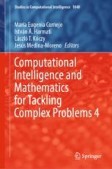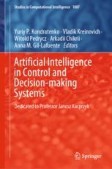Search
Search Results
-
Compositional verification of priority systems using sharp bisimulation
Sharp bisimulation is a refinement of branching bisimulation, parameterized by a subset of the system’s actions, called strong actions. This...

-
Generalized fuzzy variable precision rough sets based on bisimulations and the corresponding decision-making
Recently, the classical rough set has been extended in many ways. However, some of them are based on binary relations which only excavate “one step”...

-
Communicating Piecewise Deterministic Markov Processes
In this chapter we introduce the automata framework CPDP, which stands for Communicating Piecewise Deterministic Markov Processes. CPDP is developed...
-
Bisimulation of type 2 for BL-general fuzzy automata
In this note, first, we define bisimulation of type 2 for a basic logic general fuzzy automaton and show that if there exists a bisimulation of type...

-
Equivalence checking and intersection of deterministic timed finite state machines
There has been a growing interest in defining models of automata enriched with time, such as finite automata extended with clocks (timed automata)....

-

-
Code Reordering Obfuscation Technique Detection by Means of Weak Bisimulation
As evidenced from current literature in software security, the current signature detection mechanisms can be easily evaded by attackers simply...
-
Introducing fuzzy reactive graphs: a simple application on biology
In this paper, we propose a generalization for fuzzy graphs in order to model reactive systems with fuzziness. As we will show, the resulting fuzzy...

-
Elimination of Detached Regions in Dependency Graph Verification
The formalism of dependency graphs by Liu and Smolka is a well-established method for on-the-fly computation of fixed points over Boolean domains...
-
Transforming Dynamic Condition Response Graphs to Safe Petri Nets
We present a transformation of the Dynamic Condition Response (DCR) graph constraint based process specification language to safe Petri Nets with...
-
Overview of the Stream Theory-Based Big Data in Livestream
The big data in livestream (BDL) are existing at various forms everywhere in the world. Based on these facts, we find that not yet mathematical...

-
Algebraic aspects of big data in livestream in internet of mobile things
Big data in livestream (BDL) is topic of interesting today, due to BDL appearing in the most of Internet of Mobile Things (IoMT). Algebraic aspects...

-
Dissecting ltlsynt
ltlsynt is a tool for synthesizing a reactive circuit satisfying a specification expressed as an LTL formula.ltlsynt generally follows a textbook...
-
Extended Future in Testing Semantics for Time Petri Nets
Dense-Time Petri Nets (TPNs) are a widely-accepted model suitable for qualitative and quantitative modeling and verifying safety-critical,...
-
Verification of Reaction Systems Processes
Reaction Systems (RSs) are a computational framework inspired by biological systems. A RS is formed by a set of entities together with a set of...
-
Information-flow control on ARM and POWER multicore processors
Weak memory models implemented on modern multicore processors are known to affect the correctness of concurrent code. They can also affect whether or...

-
Decidability for \(\mathsf S4\) Gödel Modal Logics
We introduce semantics for crisp and fuzzy Gödel \(\mathsf S4\)...
-
State and Action Abstraction for Search and Reinforcement Learning Algorithms
Decision-making in large and dynamic environments has always been a challenge for AI agents. Given the multitude of available sensors in robotics and...
